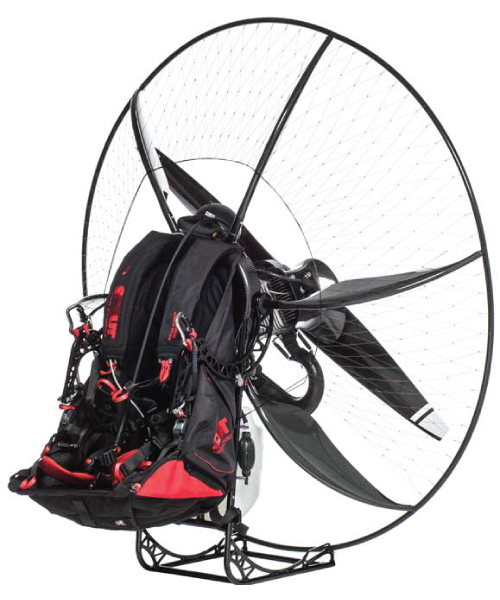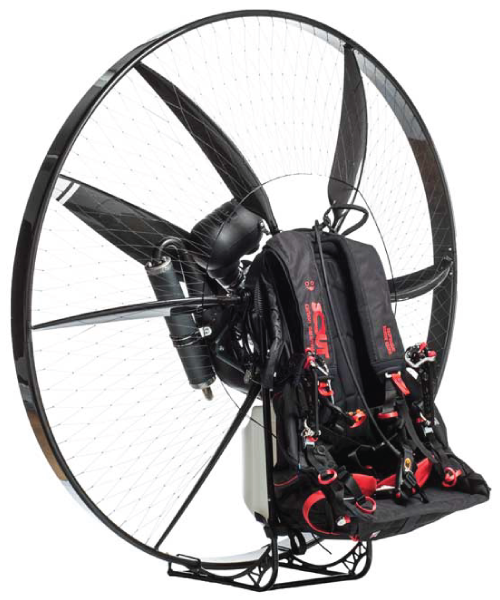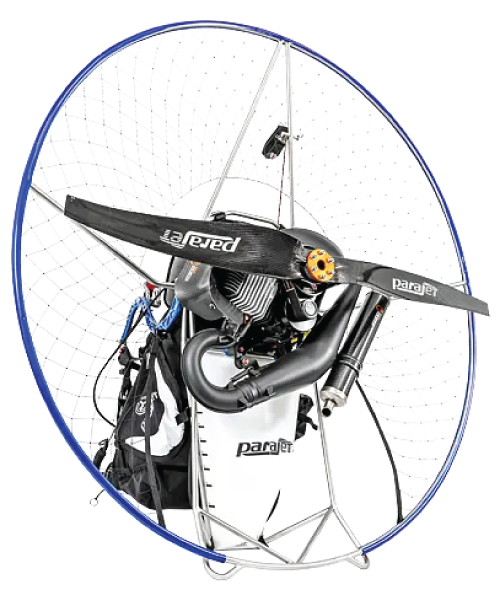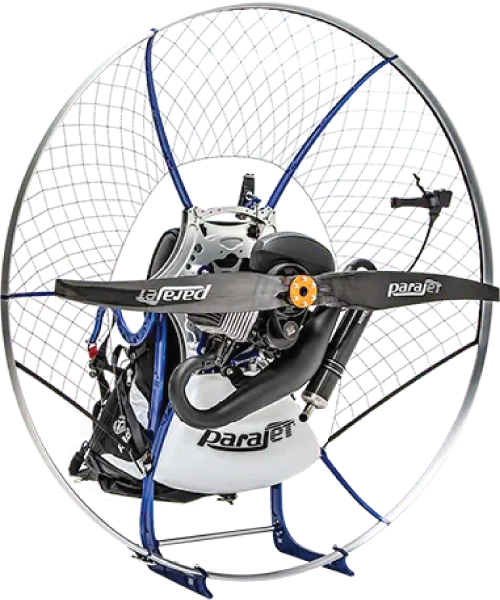PARAMOTORS





HOW TO CHOOSE YOUR PARAMOTOR
-
To sum it up, a paramotor is basically a “parachute with a backpack motor” or a “motorized version of Paragliding.” There are two different types of Powered Paragliders or “Paramotors.”
The most common is called a “Foot-Launch” unit or a backpack, where the pilot wears a backpack-style 2-stroke motor onto his / her back and has to physically run to become airborne.The second type is called a “Trike” unit, where the motor is mounted to a go-kart-style platform with wheels.
There are plenty of variations among these two types and many factors like weight, age, physical ability, takeoff elevation and flying-style determine which gear is best suited for an individual. To decide which type of unit is most appropriate for you and how much it would cost please read on…
-
Now this is a critical task. There are big differences in paramotors.
We will try to give you an unbiased comparison and an honest advice…
(no, one type of paramotor will always be a winner).Most beginners start with the engine because it is easy to compare the numbers but this is by far not the most important thing. Experienced pilots know that there are huge differences in how the paramotor feels when you fly it. This is determined by paramotor geometry and plenty of small details. As a beginner you may not be able to decide upon this but get different opinions.
*You start with a beginner wing now and you will probably upgrade to a faster wing later. But you can keep your paramotor for many years if you have chosen properly.
-
This is the crucial question, although for a beginner sometimes hard to answer. Basically there are four possible answers:
- Cross country cruiser
- Low-level-fun/slalom addict
- Acro madman
- Thermalling junkie
As time passes and you fly more often you will start to have much higher requirements on your paramotor and your priorities may change.
-
It depends on your weight and glider size/type. As this is a beginner’s guide we shall assume you fly a properly sized glider within its certified weight range.
If you are musculous, you will need more power:
1. you could start with 15 to 20HP if you are 70kg
2. add 1HP for every 5 kg above 70kgThis will be enough to get you in the air. As a general rule, more power = more fun.
-
The hook-in system gives you the feel of the glider and makes handling better or bad. The main aspect of the hook-in system is the weigh-shift ability. This determines to what extent you can steer your glider with leaning your body to the side.
A turn initiated with weight-shift AND brake is:
- faster and tighter
- safer
- more efficient
Standard Gooseneck bars
– Comfortable
– Great handling
– Very good weight-shift abilityHybrid bars (low-hang)
– Plenty of glider feedback
– Amazing weight-shift
– As close to free-flying harness as possibleFixed J bars (high-hang)
– Much safer for beginners
– Very little weight-shift
– Appropriate for thermalling and XC -
Quick and immediate answer: go for the large if your hands are long enough.
Given the same engine, large prop will have:– slightly higher maximum thrust
– better fuel economy at cruise
– less torque.*Ok, but is an increase from 125 cm to say 132 cm relevant?
It’s only 5%! So, an Increase in prop diameter by 5% will lead to increase in thrust by around 10%. -
Many people believe that a clutch increases safety. This is not always the case. It truly can prevent getting your lines caught into the prop when preparing to launch. This is not a dangerous accident but will damage your paramotor and probably lines too. The engine on idle has surprisingly lot of power. In many cases lines can cut through aluminum tubes like it was butter. If you had a clutch this would not happen because the prop would not spin.
Anyway, it is pretty easy to prevent lines from going into prop at pre-launch manipulation: be careful. Yes, that’s it.However, You will definitely need the clutch if your frame is flimsy and flexible. At forward launches, especially into a little more wind, the lines put a lot of pressure on the cage and squeeze it.
On the other hand, at landings a motor without clutch is an advantage. You kill your engine few meters above ground and land with a prop not spinning.
Thermalling XC pilots will prefer a motor without clutch. Even with motor shut off, the prop on clutch will spin and rotate as a windmill. A rotating prop has higher drag than a prop that is not moving.
-
Cross-country cruiser:
You will probably end up with a small motor (80-130cc) and these are easy to start. Most of the small engines are not even available with electric start so your dilemma is solved.Low-level fun/slalom addict:
Anything up to 200cc – 270cc is OK to start manually. Larger motors would need electric.Acro madman:
Acro pilots tend to turn their engine off for their stunts. Engines with no clutch rotate at idle. During SAT maneuver the pilot and paramotor actually fly backwards and backward airflow breaks the prop and may stall the engine. In such cases the pilot may need to restart the engine quickly. Having a button is handy.Thermalling:
For thermalling it does not really make a difference. Usually, small engines are perfectly sufficient and these don’t need electric starter. -
It is always good to have an air frame strong enough for safe forward launches as the lines can exert a substantial amount of pressure on the cage while coming up. One step further is resistance to small slips at landings. These mistakes are invariably made by most pilots at some point. No paramotor can resist a crash. But it’s OK. They are made for flying, not crashing.
*For every increase of strength you pay with extra weight.
So it’s about setting your priorities and finding your compromises. -
Will you be able to transport your paramotor assembled on your hitch rack or pick- up truck?
If so, life is easy and you do not really have to care about how easy or difficult it is do disassemble.If you need to disassemble your paramotor, then, a cage consisting of 3 or 4 parts will fit easily in a van.
-
Of course it is very important.
Aerodynamics is everything in aviation. Some may argue that speeds we fly are too low to care about but this is not true at all:
> firstly, there are paragliders flying 50-70 km/h and that is not little at all!
> secondly, airflow around the cage is even much higher because the propeller generates strong airflow.Now the question is “who should care?”
